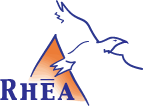
Our geophysics team uses a variety of non-destructive methods to identify buried features, from tanks and pipes to graves and other archaeological features.
Geophysics
Rhea’s team specializes in multiple techniques, ensuring that whatever challenges come up, we have the right tools for the job. These methods include:
Ground-Penetrating Radar (GPR)
Magnetometry + Magnetic Gradiometry
Conductivity + Magnetic Susceptibility Mapping
RM-15 Resistance Mapping
Deep Metal Detection
Geophysical methods make it possible to characterize the subsurface geologic conditions of a site without breaking ground. These non-intrusive methods let us efficiently identify areas of fill or disturbance, as well as buried features like tanks, pipes, graves, or foundations.
At Rhea, we have decades of experience applying geophysical methods to both industrial and archaeological contexts. We can support engineering planning by characterizing soils and industrial fills, or by identifying derelict tanks and piping. Features in archaeological contexts are often subtler, but we have been able to identify features ranging from colonial graves, roads, and foundations to pre-contact hearths and houses.
Road Connectors in a High Traffic Area
Rhea is providing surveying, environmental, geotechnical, and archaeological support for a major road connector project in Moon, Pennsylvania.
Characterization of Coal Refuse Impoundment
Rhea’s team made innovative use of geophysical methods to define coal refuse impoundments where site conditions made conventional exploration techniques impractical.
Archaeological Geophysics at Two Historic Cemeteries
Rhea’s archaeological geophysics team used non-invasive methods to locate and map over 2,800 mostly unmarked graves at two historic cemeteries in Alexandria, Virginia.
Morlunda Tower Site Archaeological Geophysics
A new cell tower was proposed at a site in Lewisburg, WV that was thought to be near an unmarked historic burial ground. Because the exact location of the graves was unknown, archaeological investigation was required before ground-disturbing construction activities could take place.
Morrow Archaeological Geophysics
The route of a planned utility line passes through a known archaeological complex associated with the National Register of Historic Places listed Stubbs Earthworks site. The Ohio State Historic Preservation Office requested that non-invasive geophysical surveys be conducted prior to construction activities.
Freedom Industries Site Geophysics
Freedom Industries was a chemical storage facility located along the Elk River just upstream of the confluence with the Kanawha River. In 2014, a chemical spill contaminated the water supply for the City of Charleston, WV for more than two weeks.
Civil War UXO Survey
The scope of the investigation was to apply geophysical technology at 19 proposed boring locations to attempt to positively identify subsurface features of interest, especially any unexploded ordnance (UXO) that might still have been in the ground from the Civil War, but also any other metallic obstructions that could be present.
Dam Maintenance Program Development + Implementation
Rhea oversaw a complex dam maintenance project, including the controlled drawdown of the reservoir, and developed plans to deal with seepage, erosion, and overgrown vegetation at the site.
PennDOT Subsurface Utility Engineering Investigations
Rhea’s services fill a gap left by conventional utility surveys, which do not account for historical features. In this project Rhea mapped numerous features that were not mapped with One-Call types of surveying.









